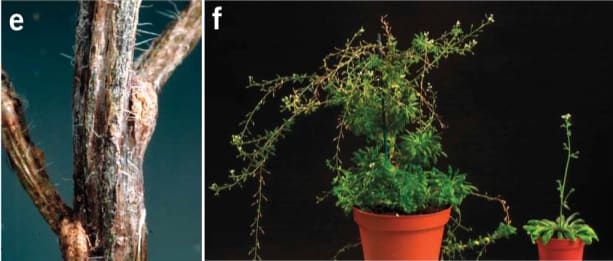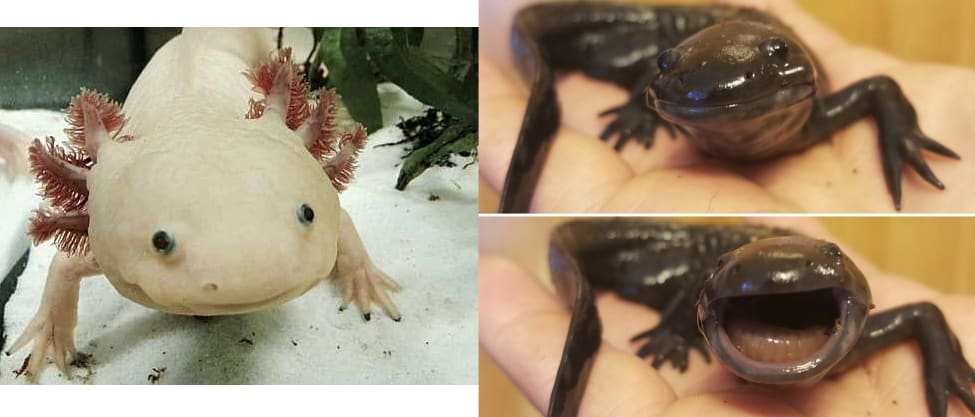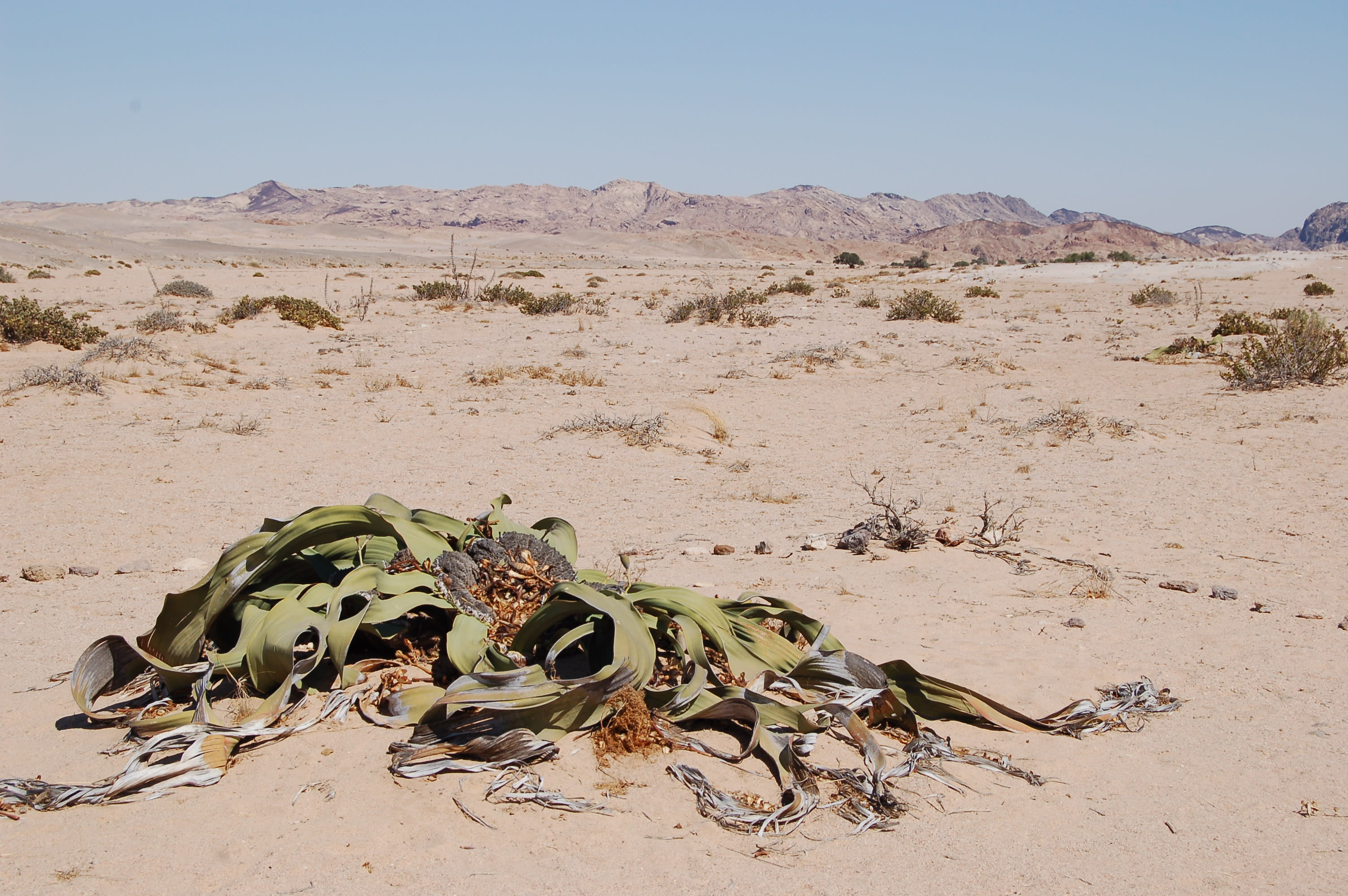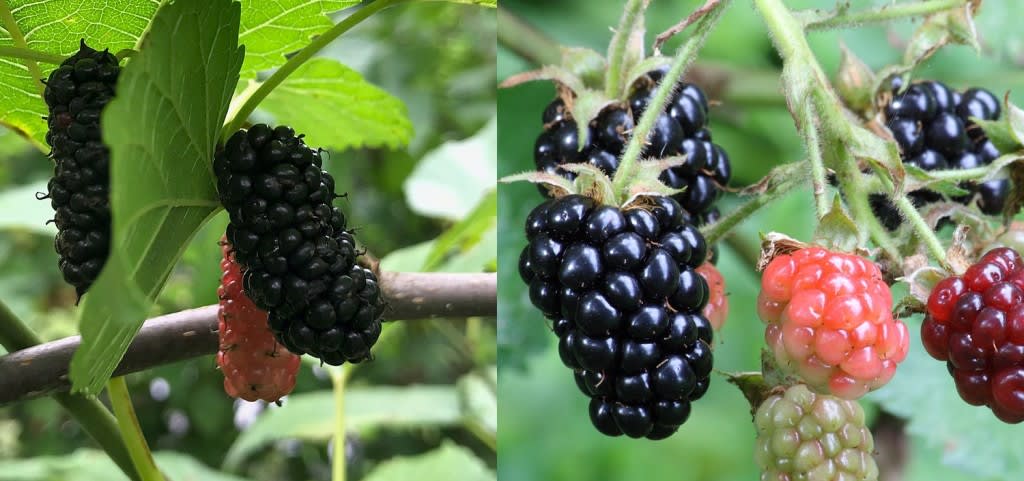[Crossposted from Eukaryote Writes Blog.]
So you’ve heard about how fish aren’t a monophyletic group? You’ve heard about carcinization, the process by which ocean arthropods convergently evolve into crabs? You say you get it now? Sit down. Sit down. Shut up. Listen. You don’t know nothing yet.
“Trees” are not a coherent phylogenetic category. On the evolutionary tree of plants, trees are regularly interspersed with things that are absolutely, 100% not trees. This means that, for instance, either:
The common ancestor of a maple and a mulberry tree was not a tree.
The common ancestor of a stinging nettle and a strawberry plant was a tree.
And this is true for most trees or non-trees that you can think of.
I thought I had a pretty good guess at this, but the situation is far worse than I could have imagined.
I learned after making this chart that tree ferns exist (h/t seebs), which I think just emphasizes my point further. Also, h/t kithpendragon for suggestions on improving accessibility of the graph.
Why do trees keep happening?
First, what is a tree? It’s a big long-lived self-supporting plant with leaves and wood.
Also of interest to us are the non-tree “woody plants”, like lianas (thick woody vines) and shrubs. They’re not trees, but at least to me, it’s relatively apparent how a tree could evolve into a shrub, or vice-versa. The confusing part is a tree evolving into a dandelion. (Or vice-versa.)
Wood, as you may have guessed by now, is also not a clear phyletic category. But it’s a reasonable category – a lignin-dense structure, usually that grows from the exterior and that forms a pretty readily identifiable material when separated from the tree. (…Okay, not the most explainable, but you know wood? You know when you hold something in your hand, and it’s made of wood, and you can tell that? Yeah, that thing.)
All plants have lignin and cellulose as structural elements – wood is plant matter that is dense with both of these.
Botanists don’t seem to think it only could have gone one way – for instance, the common ancestor of flowering plants is theorized to have been woody. But we also have pretty clear evidence of recent evolution of woodiness – say, a new plant arrives on a relatively barren island, and some of the offspring of that plant becomes treelike. Of plants native to the Canary Islands, wood independently evolved at least 38 times!
One relevant factor is that all woody plants do, in a sense, begin life as herbaceous plants – by and large, a tree sprout shares a lot of properties with any herbaceous plant. Indeed, botanists call this kind of fleshy, soft growth from the center that elongates a plant “primary growth”, and the later growth from towards the outside which causes a plant to thicken is “secondary growth.” In a woody plant, secondary growth also means growing wood and bark – but other plants sometimes do secondary growth as well, like potatoes (in roots)
This paper addresses the question. I don’t understand a lot of the closely genetic details, but my impression of its thesis is that: Analysis of convergently-evolved woody plants show that the genes for secondary woody growth are similar to primary growth in plants that don’t do any secondary growth – even in unrelated plants. And woody growth is an adaption of secondary growth. To abstract a little more, there is a common and useful structure in herbaceous plants that, when slightly tweaked, “dendronizes” them into woody plants.
Dendronization – Evolving into a tree-like morphology. (In the style of “carcinization“.) From ‘dendro‘, the ancient Greek root for tree.
Can this be tested? Yep – knock out a couple of genes that control flower development and change the light levels to mimic summer, and researchers found that Arabidopsis – rock cress, a distinctly herbaceous plant used as a model organism – grows a woody stem never otherwise seen in the species.

So not only can wood develop relatively easily in an herbaceous plant, it can come from messing with some of the genes that regulate annual behavior – an herby plant’s usual lifecycle of reproducing in warm weather, dying off in cool weather. So that gets us two properties of trees at once: woodiness, and being long-lived. It’s still a far cry from turning a plant into a tree, but also, it’s really not that far.
To look at it another way, as Andrew T. Groover put it:
“Obviously, in the search for which genes make a tree versus a herbaceous plant, it would be folly to look for genes present in poplar and absent in Arabidopsis. More likely, tree forms reflect differences in expression of a similar suite of genes to those found in herbaceous relatives.”
So: There are no unique “tree” genes. It’s just a different expression of genes that plants already use. Analogously, you can make a cake with flour, sugar, eggs, sugar, butter, and vanilla. You can also make frosting with sugar, butter, and vanilla – a subset of the ingredients you already have, but in different ratios and use
But again, the reverse also happens – a tree needs to do both primary and secondary growth, so it’s relatively easy for a tree lineage to drop the “secondary” growth stage and remain an herb for its whole lifespan, thus “poaizating.” As stated above, it’s hypothesized that the earliest angiosperms were woody, some of which would have lost that in become the most familiar herbaceous plants today. There are also some plants like cassytha and mistletoe, herbaceous plants from tree-heavy lineages, who are both parasitic plants that grow on a host tree. Knowing absolutely nothing about the evolution of these lineages, I think it’s reasonable to speculate that they each came from a tree-like ancestor but poaized to become parasites. (Evolution is very fond of parasites.)
Poaization: Evolving into an herbaceous morphology. From ‘poai’, ancient Greek term from Theophrastus defining herbaceous plants (“Theophrastus on Herbals and Herbal Remedies”).
(I apologize to anyone I’ve ever complained to about jargon proliferation in rationalist-diaspora blog posts.)
The trend of staying in an earlier stage of development is also called neotenizing. Axolotls are an example in animals – they resemble the juvenile stages of the closely-related tiger salamander. Did you know very rarely, or when exposed to hormone-affecting substances, axolotls “grow up” into something that looks a lot like a tiger salamander? Not unlike the gene-altered Arabidopsis.

Does this mean anything?
A friend asked why I was so interested in this finding about trees evolving convergently. To me, it’s that a tree is such a familiar, everyday thing. You know birds? Imagine if actually there were amphibian birds and mammal birds and insect birds flying all around, and they all looked pretty much the same – feathers, beaks, little claw feet, the lot. You had to be a real bird expert to be able to tell an insect bird from a mammal bird. Also, most people don’t know that there isn’t just one kind of “bird”. That’s what’s going on with trees.
I was also interested in culinary applications of this knowledge. You know people who get all excited about “don’t you know a tomato is a fruit?” or “a blueberry isn’t really a berry?” I was one once, it’s okay. Listen, forget all of that.
There is a kind of botanical definition of a fruit and a berry, talking about which parts of common plant anatomy and reproduction the structure in question is derived from, but they’re definitely not related to the culinary or common understandings. (An apple, arguably the most central fruit of all to many people, is not truly a botanical fruit either).
Let me be very clear here – mostly, this is not what biologists like to say. When we say a bird is a dinosaur, we mean that a bird and a T. rex share a common ancestor that had recognizably dinosaur-ish properties, and that we can generally point to some of those properties in the bird as well – feathers, bone structure, whatever. You can analogize this to similar statements you may have heard – “a whale is a mammal”, “a spider is not an insect”, “a hyena is a feline”…
But this is not what’s happening with fruit. Most “fruits” or “berries” are not descended from a common “fruit” or “berry” ancestor. Citrus fruits are all derived from a common fruit, and so are apples and pears, and plums and apricots – but an apple and an orange, or a fig and a peach, do not share a fruit ancestor.
Instead of trying to get uppity about this, may I recommend the following:
Acknowledge that all of our categories are weird and a little arbitrary
Look wistfully of pictures of Welwitschia
Send a fruit basket to your local botanist/plant evolutionary biologist for putting up with this, or become one yourself

Some more interesting findings:
A mulberry (left) is not related to a blackberry (right). They just… both did that.

Avocado and cinnamon are from fairly closely-related tree species.
It’s possible that the last common ancestor between an apple and a peach was not even a tree.
Of special interest to my Pacific Northwest readers, the Seattle neighborhood of Magnolia is misnamed after the local madrona tree, which Europeans confused with the (similar-looking) magnolia. In reality, these two species are only very distantly related. (You can find them both on the chart to see exactly how far apart they are.)
None of [cactuses, aloe vera, jade plants, snake plants, and the succulent I grew up knowing as “hens and chicks”] are related to each other.
Rubus is the genus that contains raspberries, blackberries, dewberries, salmonberries… that kind of thing. (Remember, a genus is the category just above a species – which is kind of a made-up distinction, but suffice to say, this is a closely-related groups of plants.) Some of its members have 14 chromosomes. Some of its members have 98 chromosomes.
Seriously, I’m going to hand $20 in cash to the next plant taxonomy expert I meet in person. God knows bacteriologists and zoologists don’t have to deal with this.
And I have one more unanswered question. There doesn’t seem to be a strong tend of plants evolving into grasses, despite the fact that grasses are quite successful and seem kind of like the most anatomically simple plant there could be – root, big leaf, little flower, you’re good to go. But most grass-like plants are in the same group. Why don’t more plants evolve towards the “grass” strategy?
Let’s get personal for a moment. One of my philosophical takeaways from this project is, of course, “convergent evolution is a hell of a drug.” A second is something like “taxonomy is not automatically a great category for regular usage.” Phylogenetics are absolutely fascinating, and I do wish people understood them better, and probably “there’s no such thing as a fish” is a good meme to have around because most people do not realize that they’re genetically closer to a tuna than a tuna is to a shark – and “no such thing as a fish” invites that inquiry.
(You can, at least, say that a tree is a strategy. Wood is a strategy. Fruit is a strategy. A fish is also a strategy.)
At the same time, I have this vision in my mind of a clever person who takes this meandering essay of mine and goes around saying “did you know there’s no such thing as wood?” And they’d be kind of right.
But at the same time, insisting that “wood” is not a useful or comprehensible category would be the most fascinatingly obnoxious rhetorical move. Just the pinnacle of choosing the interestingly abstract over the practical whole. A perfect instance of missing the forest for – uh, the forest for …
…
… Forget it.
Related:
Timeless Slate Star Codex / Astral Codex Ten piece: The categories were made for man, not man for the categories.
Towards the end of writing this piece, I found that actual botanist Dan Ridley-Ellis made a tweet thread about this topic in 2019. See that for more like this from someone who knows what they’re talking about.
I found this post a delightful object-level exploration of a really weird phenomenon (the sporadic occurrence of the “tree” phenotype among plants). The most striking line for me was:
What is even going on here?!
On a meta-level my takeaway was to be a bit more humble in saying what complex/evolved/learned systems should/shouldn’t be capable of/do.
Well, if you dissect them, you see they are actually nothing alike. They converged on a cool concept—if I surround my offspring with a hard protection and then wrap it in lots of bright, sweet softness, an animal will eat the shell and ingest the offspring without killing the offspring, and deposit it somewhere with fertiliser later—but the way a lemon vs. a cherry is made up is totally different. The number of offspring, their encasement, the way the fruit is structured, its shell, its number, it is a completely different thing. Like different human cultures that developed houses, without learning it from each other. But the structures don’t match at all.
Yet within the same structure, the result can still look super different too humans—yet within the same broader thing, plants are absolute whores. A citrus will happily fuck any other citrus, and something tasty always results. You know oranges? Oranges are what happens if you breed pomelo (a huge slightly bitter citrus) with mandarin (a small sweet citrus), and they seamlessly breed and give you awesome oranges (a medium sized balanced citrus). And then if you find the result too sweet, you can breed the orange back to the pomelo, and get grapefruits.
And if you love all the citrus plants too much to decide between them, you can cut branches from your favourites, stick them into one citrus plant, and have them merge into a functional Frankenstein citrus plant that bears multiple different fruit. https://www.fruitsaladtrees.com/ I love my citrus trees.
A fascinating example how natural categories can defy our naive expectations.
Unless you are a biologist, would you ever consider a category that contains beans, peas, lentils, peanuts,… and a 30 meters tall tree? And yet from certain perspective these are like peas in a pod.
What else is like this?